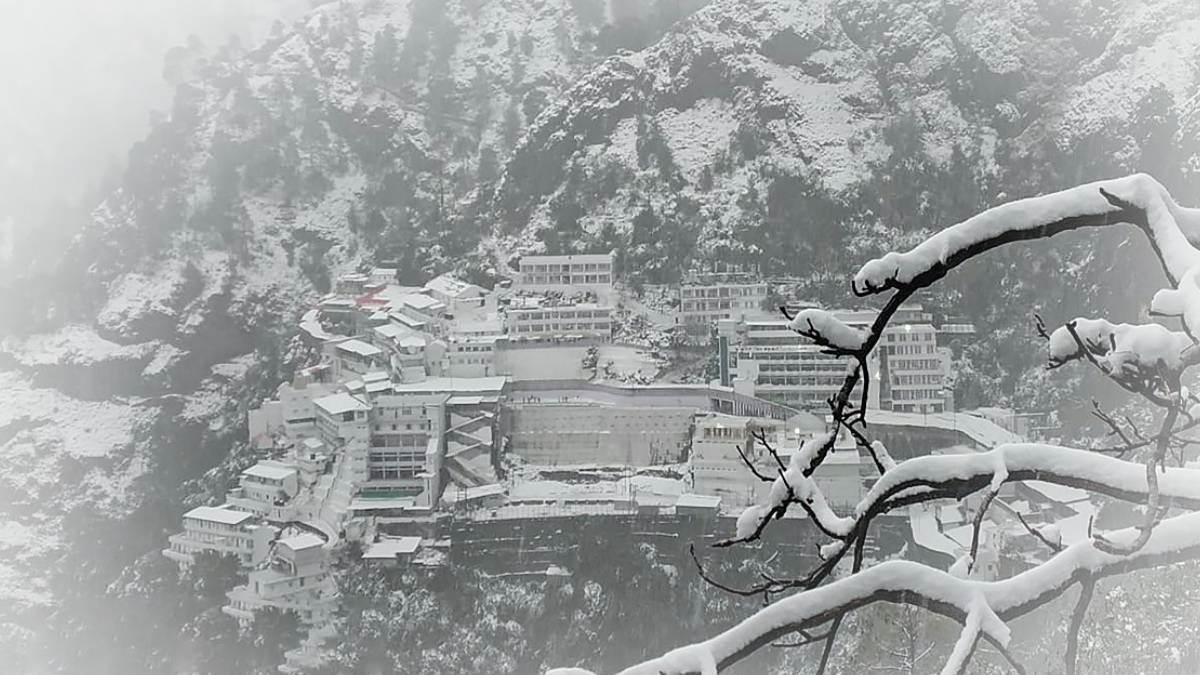In the foothills of the Trikuta Mountains, about 50 km from Jammu, lies one of India’s most visited pilgrimage sites—Vaishno Devi Temple. Every year, nearly 8 to 10 million devotees climb the steep paths of Katra to bow their heads in front of Mata Vaishno Devi, a manifestation of Goddess Durga.
The temple isn’t just a destination—it’s a journey. For many, it’s about faith. For some, it’s about testing their determination. And for all, it’s about experiencing the powerful aura of the goddess in her sacred cave. If you’ve ever thought of visiting Vaishno Devi, this guide will help you understand not just the temple but everything around it.
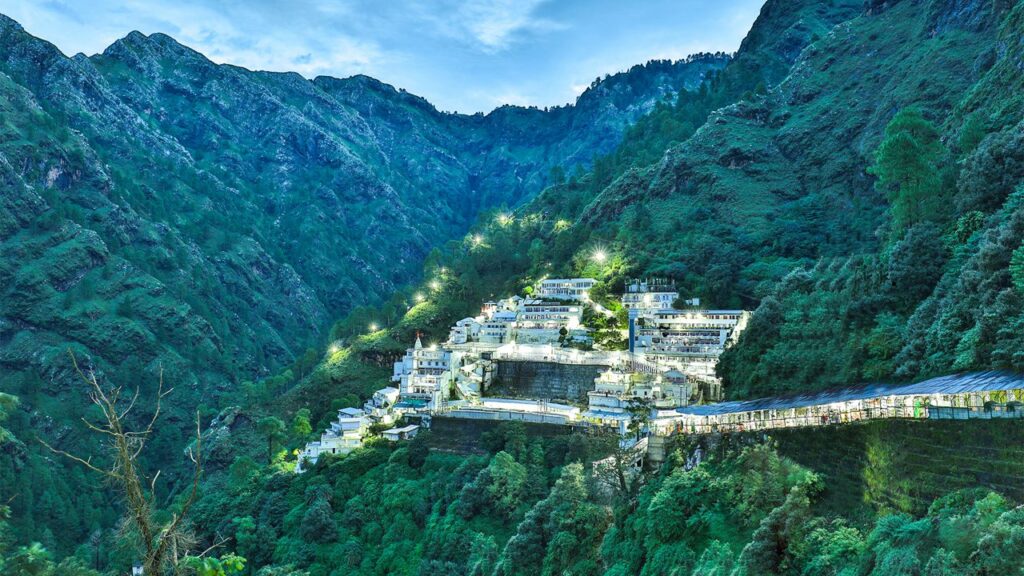
Who is Mata Vaishno Devi?
Before starting the yatra, let’s understand the story behind the shrine. According to Hindu mythology, Vaishno Devi was born as a manifestation of the three supreme goddesses—Mahakali, Mahalakshmi, and Mahasaraswati. She dedicated her life to protecting humanity and guiding people toward righteousness.
Inside the temple’s holy cave, you won’t find idols or man-made statues. Instead, you’ll see three natural rock formations called pindis, representing the three forms of Shakti. This makes the temple unique—it feels untouched, eternal, and deeply spiritual.
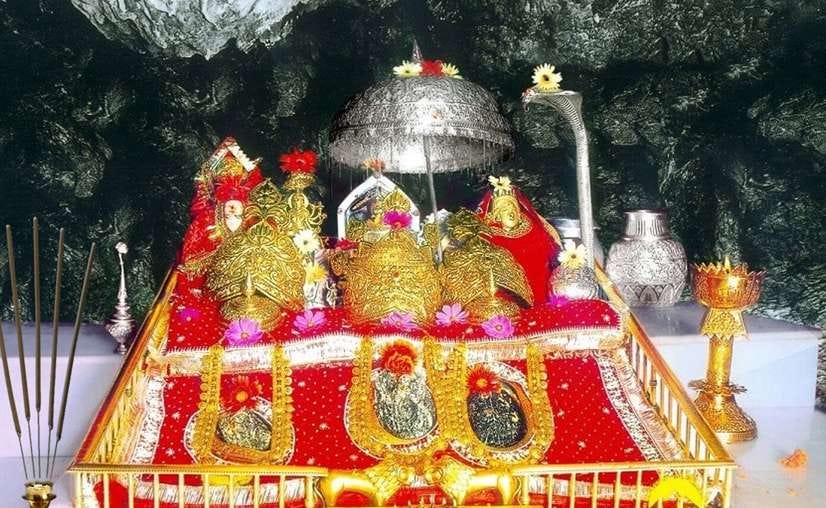
Starting Point: Katra
Every Vaishno Devi journey begins at Katra, a small yet lively town in Jammu district. Katra is where pilgrims register for the yatra and get their Yatra Parchi (slip), which is mandatory for entering the temple. The slip is free and available at the registration counters or online through the official shrine board website.
The town itself is full of energy. You’ll find bustling markets, lodges, vegetarian restaurants, shops selling scarves, prasad, walking sticks, and even souvenirs to take back home. Katra is not just a base—it’s the heart of the pilgrimage.
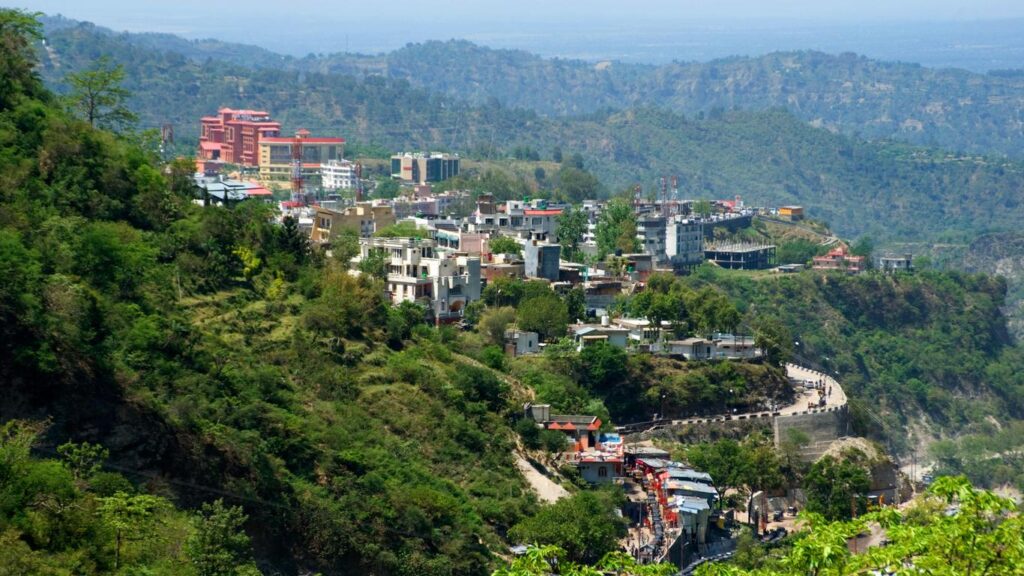
The Trek to Vaishno Devi Bhawan
The journey from Katra to the main temple, known as the Bhawan, is around 12–13 km. It may sound tiring, but the trek is one of the most memorable parts of the experience. Every step echoes with chants of “Jai Mata Di”, and the atmosphere is filled with devotion and unity.
Here are the main ways to complete the trek:
- On Foot – The most traditional and common way. The path is paved, well-lit, and lined with food stalls, resting points, and medical aid.
- Ponies – Available for hire, especially useful for children and elderly devotees.
- Palkis – A seat carried by four men, suitable for those unable to walk.
- Battery Cars – Recently introduced, these are available for part of the route.
- Helicopter Service – Operates between Katra and Sanjichhat, reducing the trek to just a few kilometers.
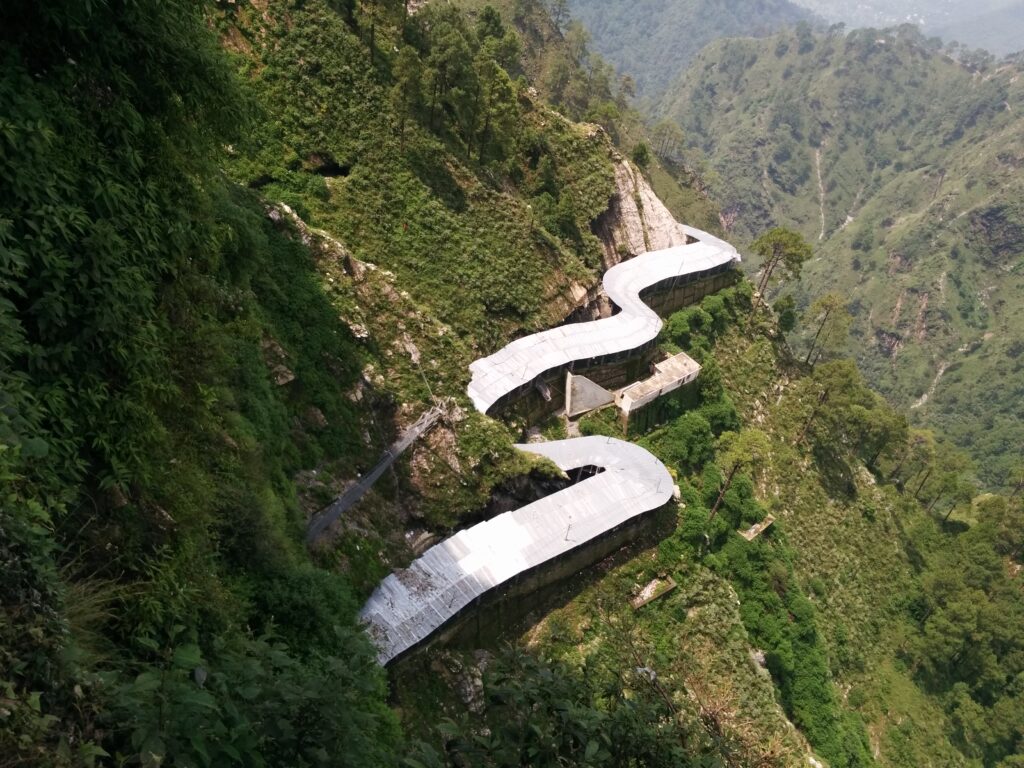
Key Stops on the Yatra
The trek isn’t just about reaching the end—it has important stops along the way:
- Banganga – The place where Mata is believed to have created a river with her arrow to quench Hanuman’s thirst. Pilgrims often stop here to wash before continuing.
- Charan Paduka – A sacred spot where Mata is believed to have rested. The footprints here are considered holy.
- Adhkuwari – A small cave temple halfway to Bhawan. Legend says Mata meditated here for nine months. Many pilgrims consider it important to visit this spot before proceeding.
- Sanjichhat – The highest point on the route and also the helipad location. From here, the view of the surrounding valleys is breathtaking.
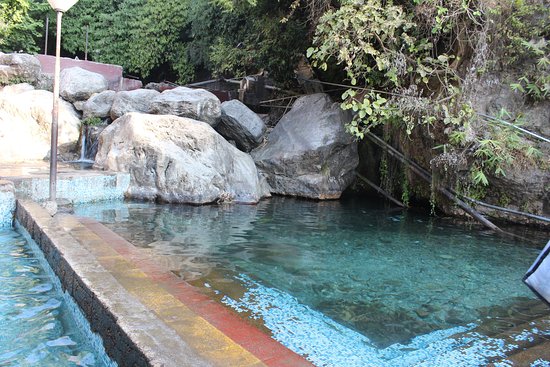
The Main Temple (Bhawan)
After hours of trekking, the Bhawan comes into sight. It’s a sprawling complex with waiting halls, cloakrooms, prasad counters, and security checks. Devotees line up to enter the holy cave, where the goddess resides in the form of the three pindis.
The moment you step into the cave, the atmosphere shifts. The sound of chants, the fragrance of incense, and the sight of the pindis create an unforgettable spiritual experience. For many, it’s a moment of tears, relief, and faith fulfilled.
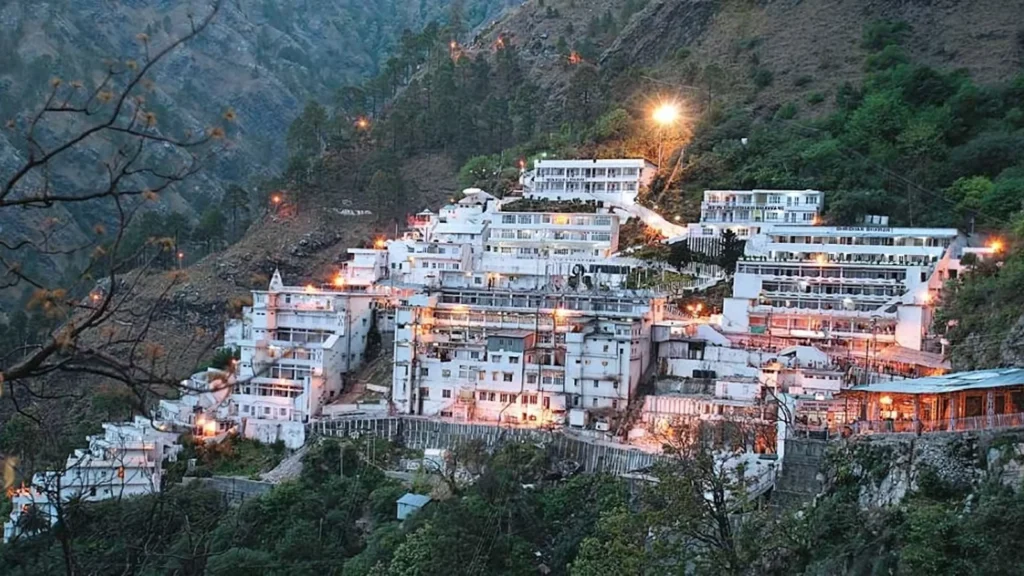
Best Time to Visit Vaishno Devi
The temple is open all year, but the experience changes with the seasons:
- March to June (Summer) – Pleasant weather, easier for trekking. This is also peak season.
- July to September (Monsoon) – The path can be slippery due to rain, but the hills are lush and green.
- October to March (Winter) – Cold weather, with occasional snowfall near Bhawan. Less crowded, but devotees need to be well-prepared.
Accommodation Options
There are multiple places to stay both at Katra and near the Bhawan:
- Dharamshalas by the Shrine Board – Affordable and clean accommodations for pilgrims.
- Hotels in Katra – Ranging from budget lodges to luxury hotels.
- Guesthouses near Bhawan – For those who want to rest after darshan without trekking back immediately.
Booking in advance, especially during peak seasons, is highly recommended.
Food and Langar
The entire route is lined with vegetarian food stalls. You’ll find tea shops, dhabas serving simple yet filling meals, and prasad counters. Alcohol and non-vegetarian food are strictly prohibited.
The Shrine Board also runs langar services, offering free meals to pilgrims. It’s simple food but served with devotion, and the experience of sitting together with hundreds of strangers sharing the same plate is humbling.
Travel Tips for First-Time Visitors
- Register Your Yatra – Get your Yatra Parchi before starting.
- Carry Light – Pack only essentials like water, a flashlight, and a warm shawl.
- Dress Comfortably – Walking shoes and layered clothing are best.
- Stay Hydrated – There are water points along the route.
- Respect the Rules – Photography is restricted inside the temple. Maintain silence in holy areas.
- Plan for Crowd – Weekends and festivals attract heavy crowds, so expect longer waiting times.
Nearby Attractions
While Vaishno Devi is the main pilgrimage, you can also explore nearby spots:
1. Bhairavnath Temple
If you’ve heard stories of the Vaishno Devi legend, you probably know the name Bhairavnath. Located just 2 km uphill from the Bhawan, this temple is considered the final step of the yatra.
According to belief, Bhairavnath, a demon, chased Mata Vaishno Devi during her meditation. When the goddess killed him, he realized his mistake and begged for forgiveness. Out of compassion, Mata granted him moksha (liberation) and declared that a devotee’s yatra would be considered incomplete without visiting his temple.
The trek to Bhairavnath Temple is short but steep. Ponies are available for those who find the climb difficult. Once at the top, the view of the Trikuta hills and the valley below is breathtaking.
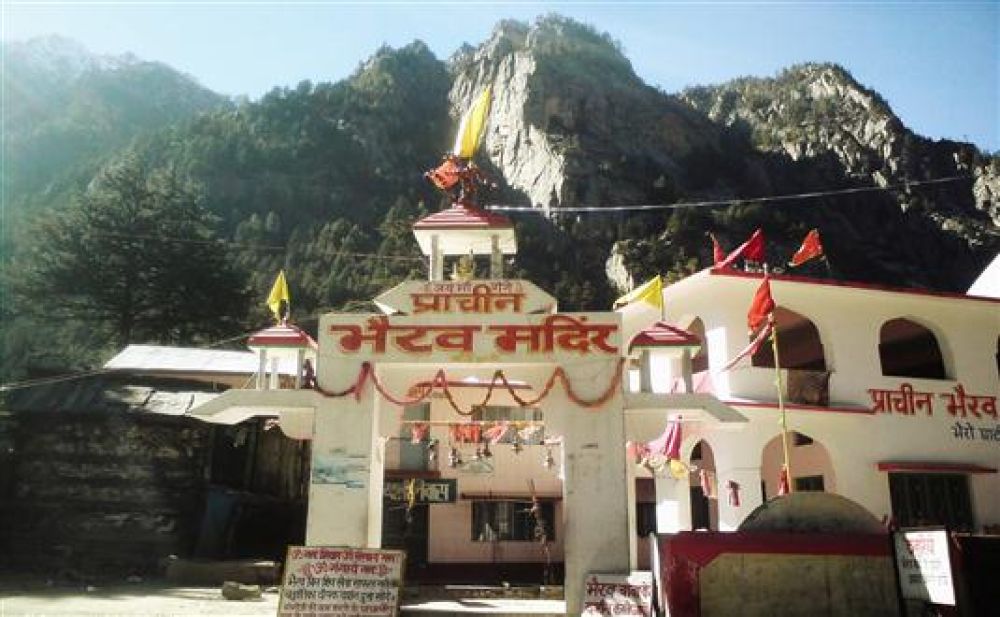
2. Banganga
Banganga is not just a stop on the trek; it’s a sacred attraction in itself. Located about 1 km from Katra, this river is believed to have been created by Mata Vaishno Devi when Hanuman felt thirsty. She struck the ground with her arrow, and water began to flow.
Even today, devotees stop here to wash their hands and feet before beginning the yatra. The ghat at Banganga is peaceful, and many pilgrims sit here for a while, soaking in the spiritual energy. If you visit during early morning, you’ll see the first light of the sun glistening on the water—a serene sight.

3. Charan Paduka
About 2.5 km from Katra, Charan Paduka is another important stop. The place is named after the footprints of Mata Vaishno Devi, believed to be imprinted on a rock here. Pilgrims bow down at this spot to seek blessings before continuing the journey.
The temple built around Charan Paduka is simple but holds deep emotional value for devotees. The location also offers beautiful views of the Katra valley below, making it a refreshing stop for rest and reflection.
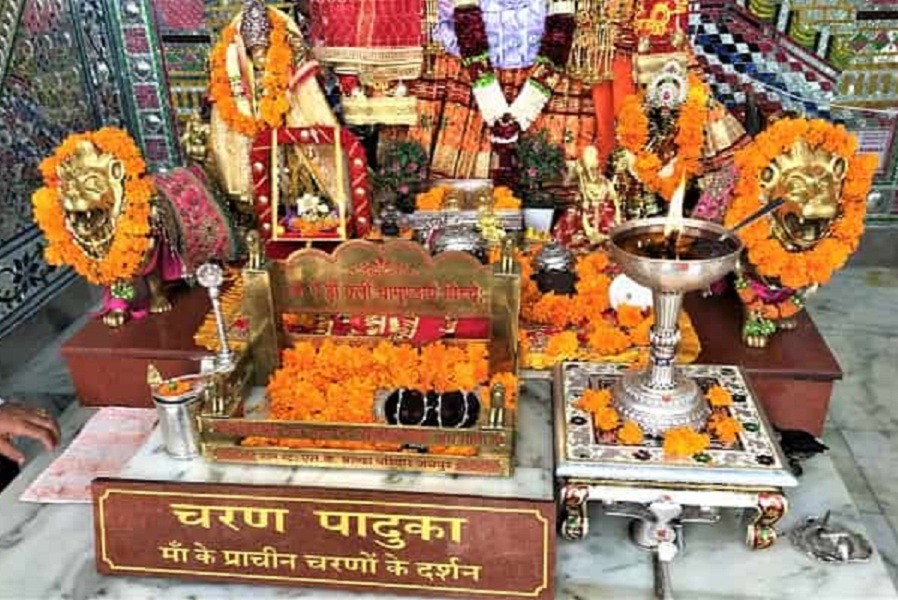
4. Adhkuwari
Halfway up the trek, around 6 km from Katra, lies Adhkuwari, a sacred cave where Mata Vaishno Devi is said to have meditated for nine months before defeating Bhairavnath. The cave is narrow and only allows a few pilgrims to pass through at a time, which makes the experience intimate and powerful.
Devotees believe that passing through the cave cleanses sins and brings good fortune. Because of its spiritual significance, Adhkuwari is often crowded, but it is worth the wait.
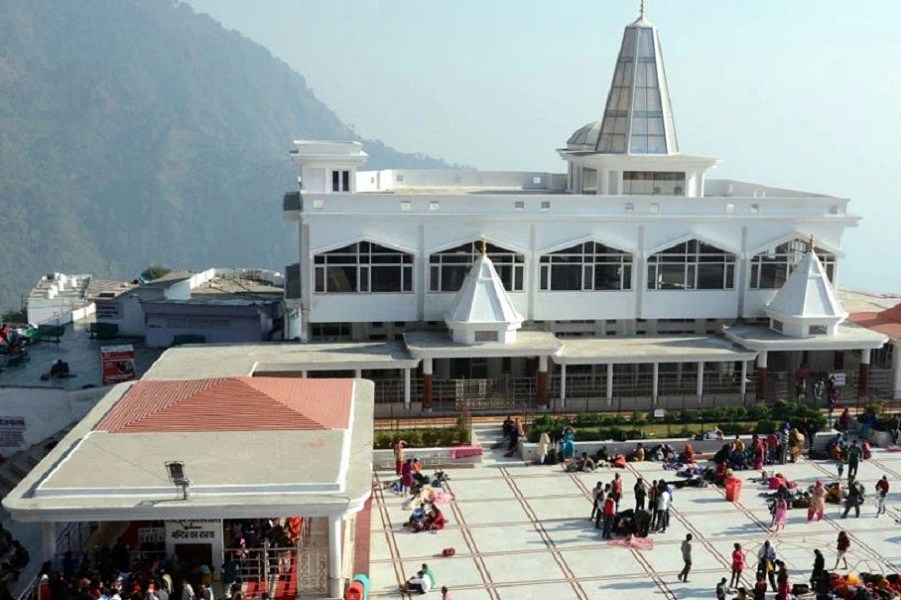
5. Shiv Khori
If you’re in the mood for another cave shrine, Shiv Khori is about 70 km from Katra. Dedicated to Lord Shiva, the cave is around 200 meters long, with a natural stalagmite believed to represent the lingam. The walls of the cave are full of natural carvings resembling gods and goddesses.
The atmosphere inside is mystical, and the journey to Shiv Khori combines devotion with adventure. Pilgrims often pair their Vaishno Devi visit with Shiv Khori to complete their spiritual circuit.
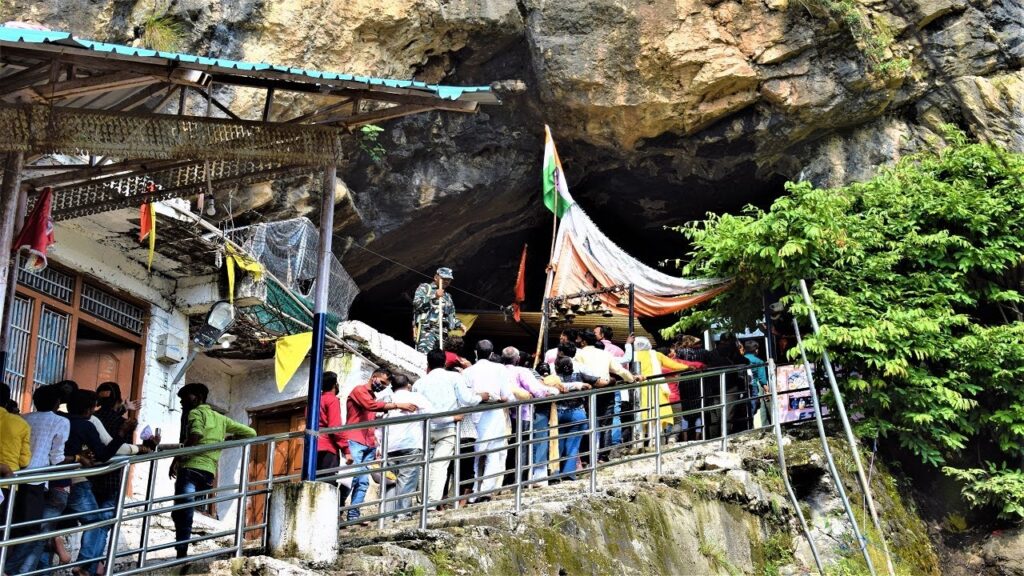
6. Patnitop
For those who want a break from temples and trekking, Patnitop is the perfect hill station escape. Located around 80 km from Katra, this charming town is surrounded by pine forests, meadows, and snow-capped peaks in winter.
Patnitop is ideal for a picnic or a short stay. Adventure lovers can try paragliding, trekking, and skiing (in winter). For families, just sitting in the open meadows, breathing fresh air, and soaking in the views is rejuvenating after the intensity of the yatra.

7. Sanasar
A little beyond Patnitop lies Sanasar, often called the “mini Gulmarg of Jammu.” This place is famous for its vast meadows and adventure sports like rock climbing, parasailing, and horse riding. For those who love nature, Sanasar is a hidden gem. Spending a day here adds balance to your Vaishno Devi trip by mixing spirituality with adventure and relaxation.
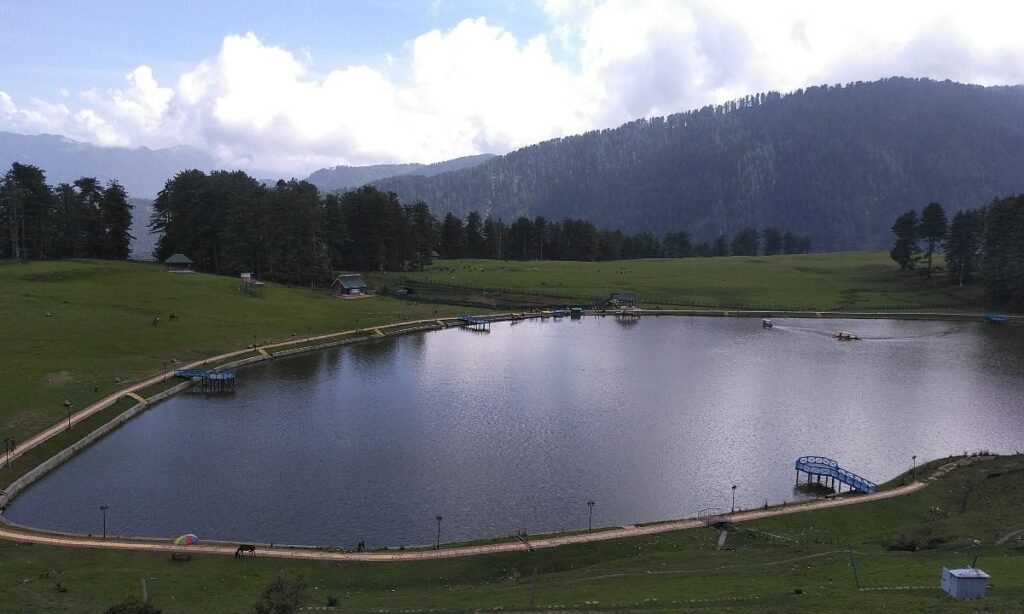
8. Raghunath Temple, Jammu
Back in Jammu city, about 50 km from Katra, stands the magnificent Raghunath Temple. Built in the 19th century, it’s one of the largest temple complexes in North India, dedicated to Lord Rama. The temple is not just architecturally impressive but also spiritually uplifting, with shrines dedicated to many deities.
If you’re flying in or out of Jammu, Raghunath Temple is a must-visit, giving you one more reason to extend your journey.
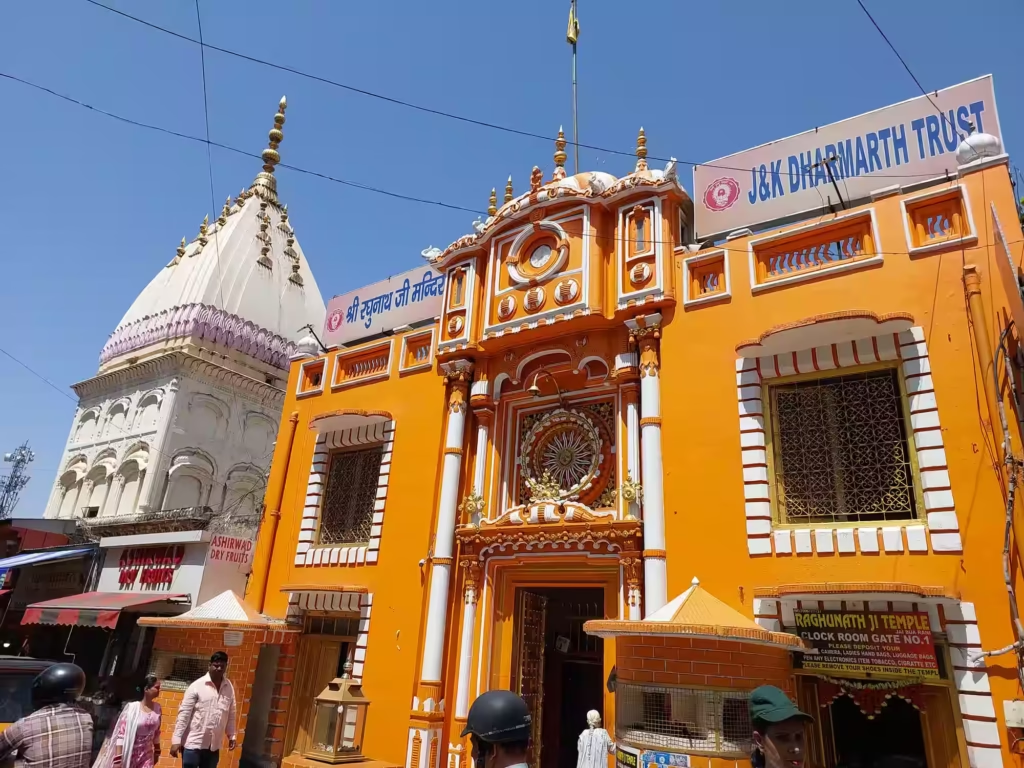
9. Jajjar Kotli
Located around 15 km from Katra, Jajjar Kotli is a picnic spot on the banks of Jajjar River. Surrounded by green hills and natural beauty, it’s a relaxing place to spend a few hours after completing the yatra. Families often visit here to enjoy the serene environment and cool waters.
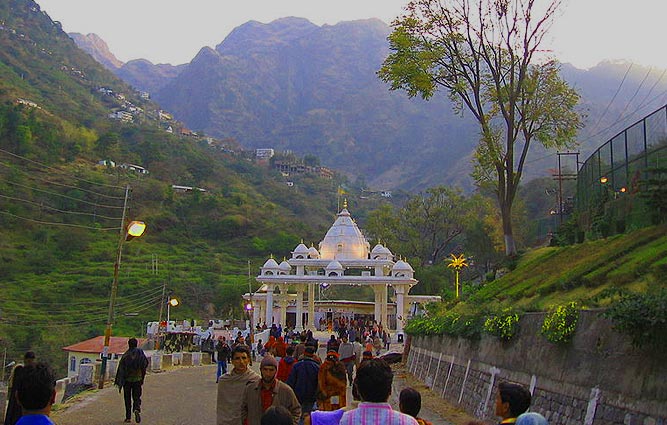
10. Amar Mahal Palace, Jammu
For a mix of history and culture, Amar Mahal Palace in Jammu is a unique stop. Once the residence of the Dogra dynasty, the palace now functions as a museum. It houses rare art, artifacts, and the famous 120 kg golden throne.
Exploring the palace gives you a glimpse of Jammu’s royal past, offering a cultural contrast to the spiritual journey of Vaishno Devi.
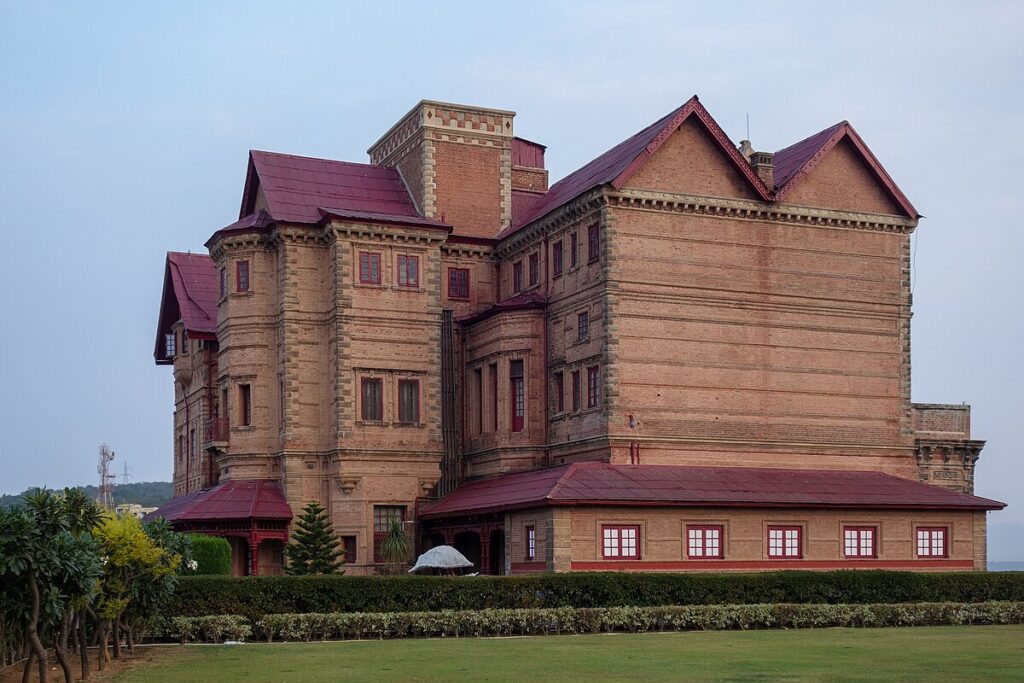
FAQs about Vaishno Devi Temple
Q1: How long does it take to complete the trek?
Usually 5–7 hours on foot, depending on pace.
Q2: Is helicopter booking available online?
Yes, through the official Shrine Board website.
Q3: Can children and elderly complete the yatra?
Yes, with the help of ponies, palkis, or battery cars.
Q4: Are lockers available at the Bhawan?
Yes, cloakrooms are available for free to keep belongings.
Q5: Is night trekking safe?
Yes, the path is well-lit and secure with continuous pilgrim movement.

